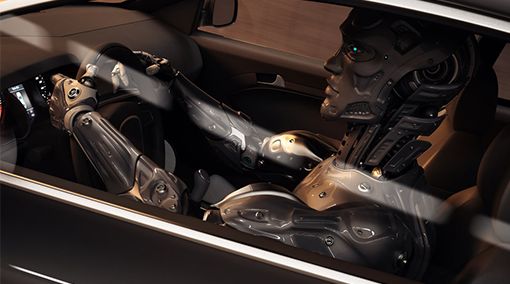It is human nature to invent solutions when things get tough. With each new trouble, we are quick with an remedying technology. Likewise, robotic assistance is the winning solution when challenges prop up in manual testing.
All new products, be it web applications, devices or equipment, cannot be unleashed into the market without adequate testing. From the wheel to the spaceship, all that has ever been invented has first undergone their own respective tests to deem them OK. When highly interactive and responsive processes are in demand all over, automation testing becomes the key player. As opposed to the more traditional manual testing, where a human is required to sit before a computer and carefully execute the test steps, automation testing allows the use of an automation tool to execute the test case suite.
Within the myriad ways of automation testing, the buzzword today is robotic assistance. Robotic arms are specifically designed and simulated to carry out tests that are impractical to be done manually. Some even call this the fourth industrial revolution. It is true that robots are exponentially being incorporated into factories; bringing with them incredible precision, productivity and flexibility.
Robot assisted model-based test automation was brought in with the purpose of unlocking additional functionality and bridging the gaps in the current automation frameworks. Of the two ways of controlling the device under test (DUT), i.e. programmatically and by robot hand, the latter surpasses the former with regards to reliability and functionality. With a robot, it is possible to simulate a user’s behavior more accurately. From the one-fingered robots capable of tapping and dragging to the two-fingered ones competent to perform two finger gestures, robot arms show a steady increase in functionality. A robotic assistance arm with the knowledge of how to tap any point on the given device is easily available in the markets, smoothing the tedious task of testing.
The international market value for robotic systems is estimated around $32 billion and the automotive division itself has increased their robots by 43% in one year. It seems to be the right time to get your foot in the automation door.
Despite the rather large initial investment, which might seem intimidating, using robotic arms to replace the manual testing is a move that pays-off very well in the long run. Throughput speed increases with robotics, thereby positively impacting production and costs.
The biggest advantage of robotics is that they facilitate improved quality and reliability. Applications are performed in this manner with precision and high repeat-ability. Additionally, robots increase workplace safety. Workers move to supervisory roles where they no longer have to perform dangerous applications in hazardous settings. Moreover, an automated robot that has the ability to work at a constant speed without pausing for breaks, sleep, or vacations, ultimately has the potential to produce more in a shorter time than a human worker.
It is wise to conclude that in situations involving testing with a repetitive nature and long duration, robots successfully substitute for humans with more than just a helping hand.




verybigman
April 30, 2017Robotic cooking aids are gaining traction in the modern kitchen , but the team behind Obi has a goal more noble than just cooking up a gourmet storm . This little robot arm is designed to empower people afflicted with physical disabilities, giving them back the dignity of feeding themselves. Those inputs can be customized, depending on the specific needs and abilities of the user. Big bright “Buddy Buttons” on the table can be useful for those who still have some function in their hands but lack the fine motor skills required to steady a spoon. They could also be placed on the floor to use as foot pedals. Pillows that respond to the slightest squeeze allow for head and cheek activation, while a small mouth piece switch can be triggered through sip or puff actions.
Anirban Ghatak
May 14, 2017Very nice content and blog. Wish all the best to the Sastra Robotics team.